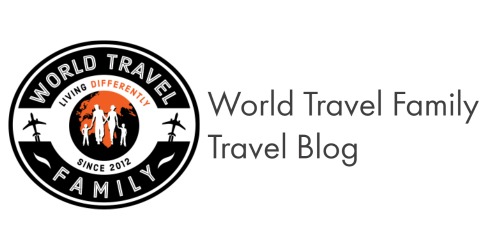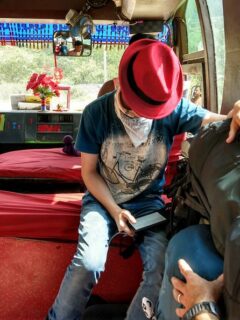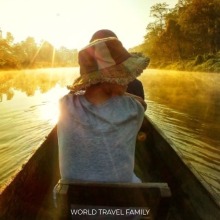Let’s talk about how to worldschool (AKA world school). Worldschooling has taken up at least seven years of my kids’ childhoods. Either side of worldschooling they were homeschooled, ie. at home, and then, at the end of their high school years, went into formal online schooling to study for exams. This came about because of COVID and our wings being clipped. Their childhood without school did not put them “behind” academically, at all. So, I feel that I can talk about worldschooling from a position of knowing a bit about it. I hope you agree.
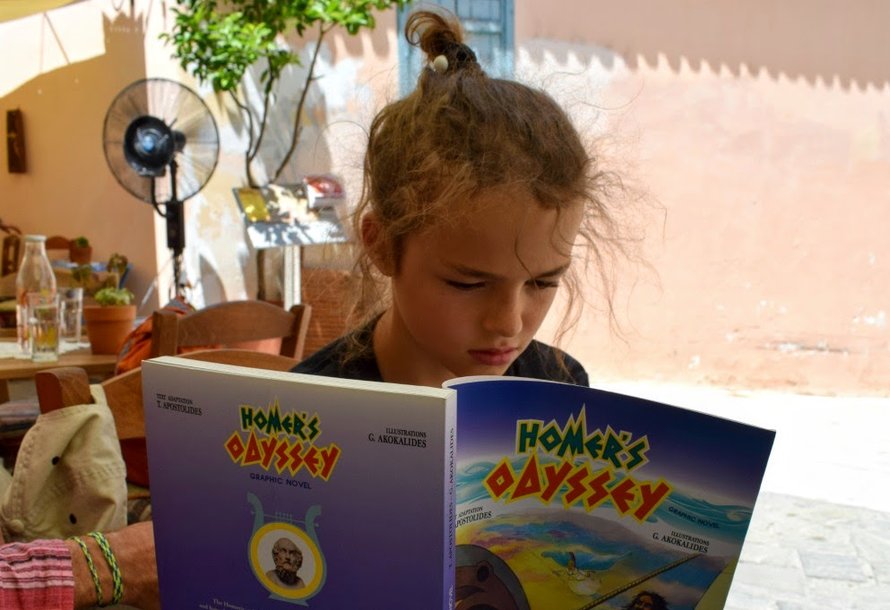
This will be a short, easily digestible post with key points, mistakes to make, things to do and not to do, as a worldschooling parent or family. If you’re wondering how to get started with worldschooling, read this first and have a think about how worldschooling works and if you could or should do it.
Worldschooling How To Do It
We’re not going to talk here about finding the money to travel with your kids, nor about the logistics of long-term travel. Those topics can be found in hundreds of other posts on this website. This blog post is purely about the education, facilitating your kids’ education through a worldschooling some call it world schooling, lifestyle.
How Not To Worldschool
As we travelled we did use some online educational resources and we did pack the homeschool workbooks. Honestly, we used them rarely. We were the most relaxed educators on the worldschooling circuit, I think. I had my doubts and wobbles, but it all came good. It can for you too.
Provide as Many Diverse Locations As Possible
Obviously, right now we’re all a bit stuck. But if you plan to start worldschooling as soon as we’re all able to travel again, go for diversity.
If your kids are to learn from the world you’re going to need to cover as much of the world as possible and no destination is unworthy. They can learn as much about the world in Dubai as they can at the Cu Chi Tunnels or in the Disney theme parks. Learning is everywhere.
Be sure to cover every culture, biome, industry, farming style, manufacturing area, religion, geographical feature, and income bracket. Cover all of the continents, oceans, and seas. Just do as much as you possibly can and if time or money are limited, go for contrasts in a worldschooling curriculum.
Talk
So much of worldschooling (or indeed homeschooling) comes about through conversation with your kids. These children don’t learn in classrooms, instead, they learn a lot through talking and exploring topics with you.
This is one of the reasons I’ve always loved walking with my kids. Be it a long walk to the local shop or three weeks in the Himalayas. These conversations, following their interest and questions, are gold.
Walking gives us all opportunity to be away from any other distraction. No screens, no chores, no toys, just being in the moment and engaged with their ever curious minds. I find travel without my husband better for fully engaging with the kids. That’s a very honest fact of life.
Talk about what’s going on around them. If you find a crab in a rock-pool it’s a crustacean with a hard exoskeleton. It’s not just a crab. It lives in the intertidal zone so has to cope with changes in salinity and temperature. But don’t make it dry, make it fun and interesting. Answer their questions. If you don’t know the answers look it up on YouTube later. YouTube is your best friend.
You can do this, inject learning, into almost anything. Frying an egg involves denaturing of protein molecules, cold weather brings freezing and melting point discussions, The Big Bang Theory brings string theory, this is how it goes.
Prime Your Kids
You have to get your kids excited or interested in whatever you’re doing before you go there. This is probably the single most important aspect we’ve observed during our life on the road.
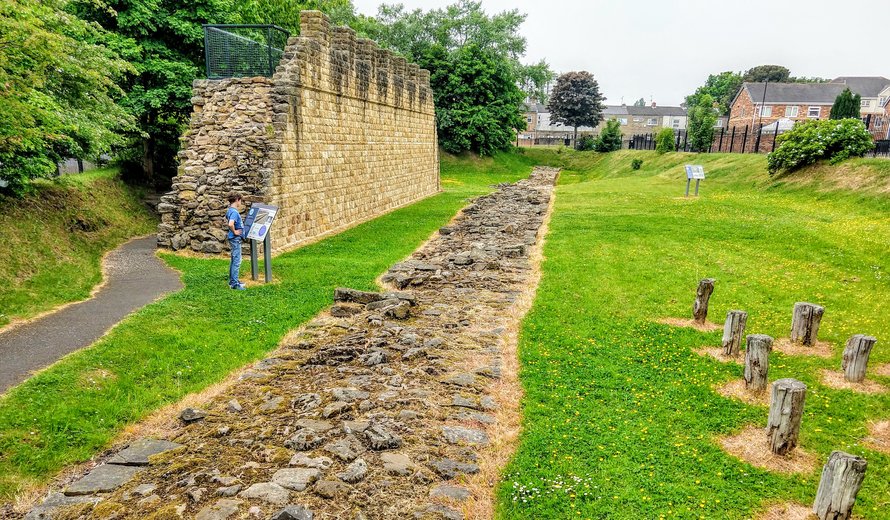
In the photo above you’ll see some crumbling ruins. My kids would have walked on by and shown absolutely zero interest if they didn’t already know that this was Hadrian’s Wall and have some inkling into its significance. To be honest, it wasn’t very interesting, but now, at least, they know how it looks, have some concept of size, and everything about it is a little more firmly embedded in their minds.
Before we visited Romania I told them tales of Dracula, Transylvania, wolves and bears. They were more than excited to go. I tried to get them to read Bram Stoker’s novel, they still haven’t some 6 years later. Instead we found an animated version on YouTube, much better.
This is how it happens, spark an interest, make them curious to see all these things for themselves.
I remember a non-parent mocking me for being pleased my kids were reading the Asterix books. They were learning history. She thought this was ridiculous as the books aren’t historically accurate. But think about it, small children have no concept whatsoever of “The Romans”. These fun cartoon books introduce so many ideas and concepts. Everything has educational value.
They first saw Van Gough in Doctor Who. That episode sparked a desire to see his works at London’s National Gallery. I doubt I would have got them through the doors otherwise. Just get them interested in fun ways, it’s gold.
Don’t Force It
I used to take my kids to all the museums when they were small. They were never much interested. One or two things would maybe jump out at them and hold their interest for a short while but mostly they just wanted to play.
You can take a horse to water but you can’t make it drink. That goes double for worldschooling or homeschooling.
We learn because we want to or need to. If a child is interested or needs to learn, for instance, my son needed to learn to read so that he could label his Minecraft creations, they will learn.
As they get older these museum trips bring more and more educational benefit. If a child has a real interest in what’s around them, then they become the self-motivated knowledge sponges that we’re told all children are. The age of your kids changes everything. The best age to travel with your kids is of course, when you can, but older kids learn more academically useful stuff.
Let Worldschooling Build
All learning builds over time. Don’t expect your eight year old to suddenly be an expert on world wars because they’ve seen the Somme battlefields.
However, should they need to study war history (as my kids are currently doing) they have a whole bunch of memories stashed away. They have concepts of place, climate, scale, a few facts, and figures. Neural connections have been created, it all just builds.
Let Them Read
Reading is so important. Let your kids read, constantly and as much as possible. Let them read books of their own choosing and develop their own interests.
Kids in school don’t get to choose their own reading material so much. Your kids, my kids, outside school have endless hours on buses, trains, at airports and in cafes. Let them read.
Don’t Play Teacher
You are not teacher, you don’t need to be teacher, kids outside school don’t need teachers. You are protector, guardian, primary source of comfort and love, and at the same time co-explorer, co-wonderer, co-learner.
Don’t think you can’t teach your kids. You are not required to teach, just be there, be engaged, explore.
Remember That All Learning Has Value
Don’t ever think that learning or education is just the facts memorised in school. A school curriculum is limited, it’s just what your state or government thinks is important for kids to know. There is an agenda.
All learning has value. Doubtless, through travel and worldschooling, kids pick up extras in the self-confidence or empathy areas but they’ll also learn stuff that your local school will never touch on.
Does your local school teach Thai history for instance? Why is that considered not worthy of the curriculum? Here’s a post my son wrote and researched on the famous Three Kings Statue in Chiang Mai.
How about survival skills, growing food, coping with mountain environments, how to scuba dive, what plastic pollution really looks like in the worst-hit countries, and how to get around on the London Tube?
I remember my parents being totally stumped by the tube map. My kids could get around London solo and blindfold.
Would you know how to get a new UK passport in Bangkok, how to insulate a home and keep warm at minus 25 degrees C, or how to acclimatise at altitude?
Do you know how to get good wi-fi at the ends of the earth or indeed, how to make a good living through blogging? Do you know that many formal exams can be sat at any age?
Maybe you do, maybe you don’t. These are just small examples of the life skills and learnings that come about through not being in school. Through living life in the real world instead of a classroom full of same-age kids.
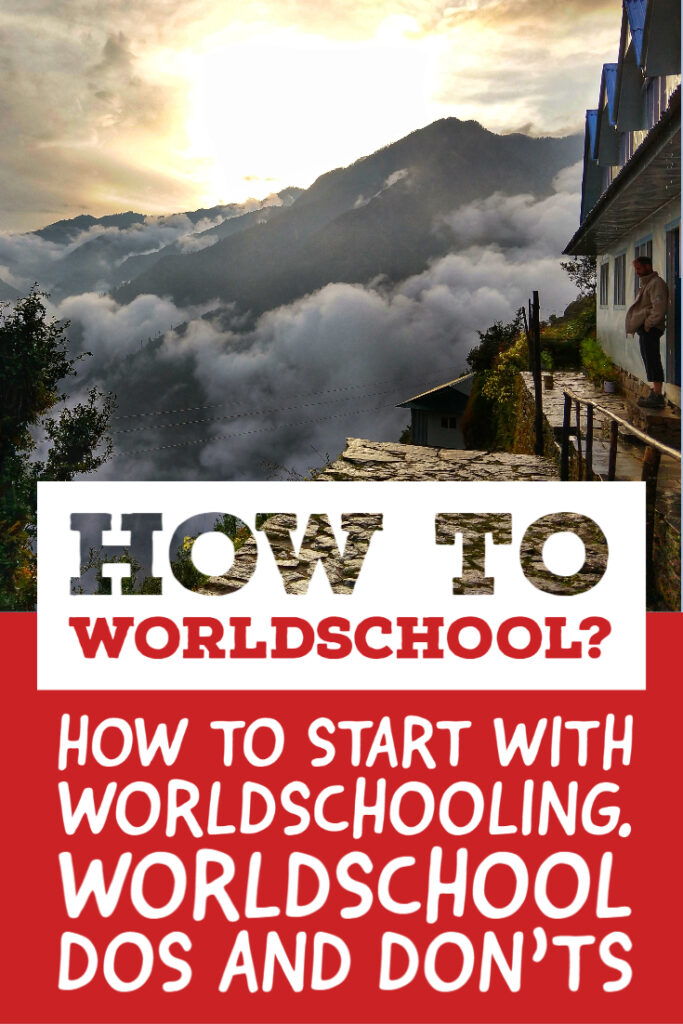
How To Worldschool, Your Way
Does that sound fair? Other worldschooling families might put a totally different spin on how to worldschool. This is our way and it has been successful in that our kids had happy, joy-filled, childhood, full of diverse people, places, and experiences.
They are worldly-wise and knowledgeable. They have open minds and are keen learners. They have friends and contacts in many countries. They have seen and experienced the world as it really is, not through the lies of the media. The academics will follow if that’s what they choose, they are already busy with volunteer work, as well as working for me on this site and for people outside the home part-time. They’re building impressive resumes but I hope they will see the light and follow me into self-employment. Worldschooling works, homeschooling works. Will you try? Can you save this to Pinterest for us, spread the word, we want more people and kids to find freedom. Our post on why we quit homeschooling or worldschooling for online learning because of lockdown, is here.
